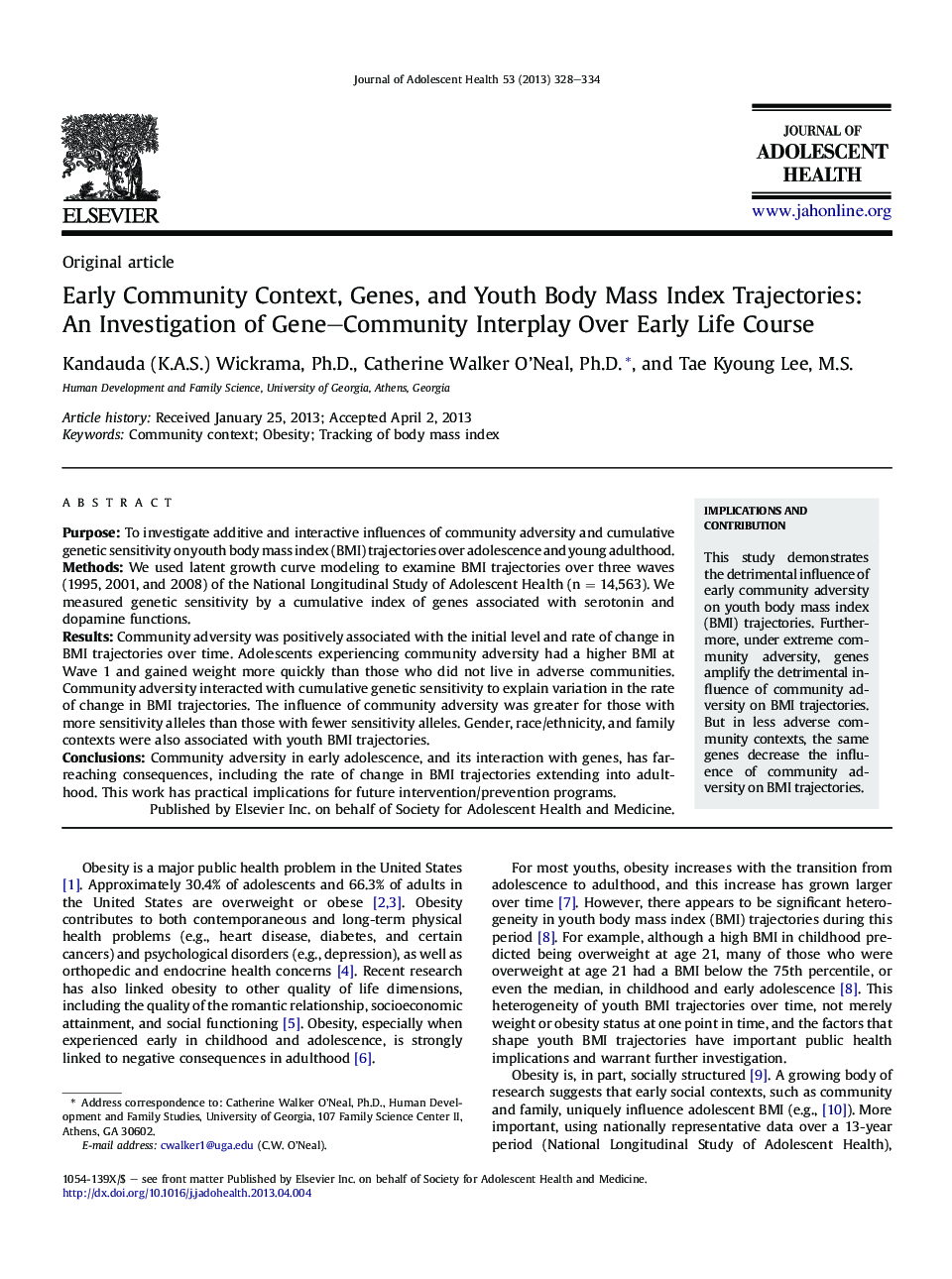| کد مقاله | کد نشریه | سال انتشار | مقاله انگلیسی | نسخه تمام متن |
|---|---|---|---|---|
| 1079307 | 950495 | 2013 | 7 صفحه PDF | دانلود رایگان |

PurposeTo investigate additive and interactive influences of community adversity and cumulative genetic sensitivity on youth body mass index (BMI) trajectories over adolescence and young adulthood.MethodsWe used latent growth curve modeling to examine BMI trajectories over three waves (1995, 2001, and 2008) of the National Longitudinal Study of Adolescent Health (n = 14,563). We measured genetic sensitivity by a cumulative index of genes associated with serotonin and dopamine functions.ResultsCommunity adversity was positively associated with the initial level and rate of change in BMI trajectories over time. Adolescents experiencing community adversity had a higher BMI at Wave 1 and gained weight more quickly than those who did not live in adverse communities. Community adversity interacted with cumulative genetic sensitivity to explain variation in the rate of change in BMI trajectories. The influence of community adversity was greater for those with more sensitivity alleles than those with fewer sensitivity alleles. Gender, race/ethnicity, and family contexts were also associated with youth BMI trajectories.ConclusionsCommunity adversity in early adolescence, and its interaction with genes, has far-reaching consequences, including the rate of change in BMI trajectories extending into adulthood. This work has practical implications for future intervention/prevention programs.
Journal: Journal of Adolescent Health - Volume 53, Issue 3, September 2013, Pages 328–334